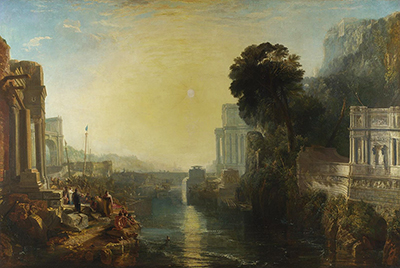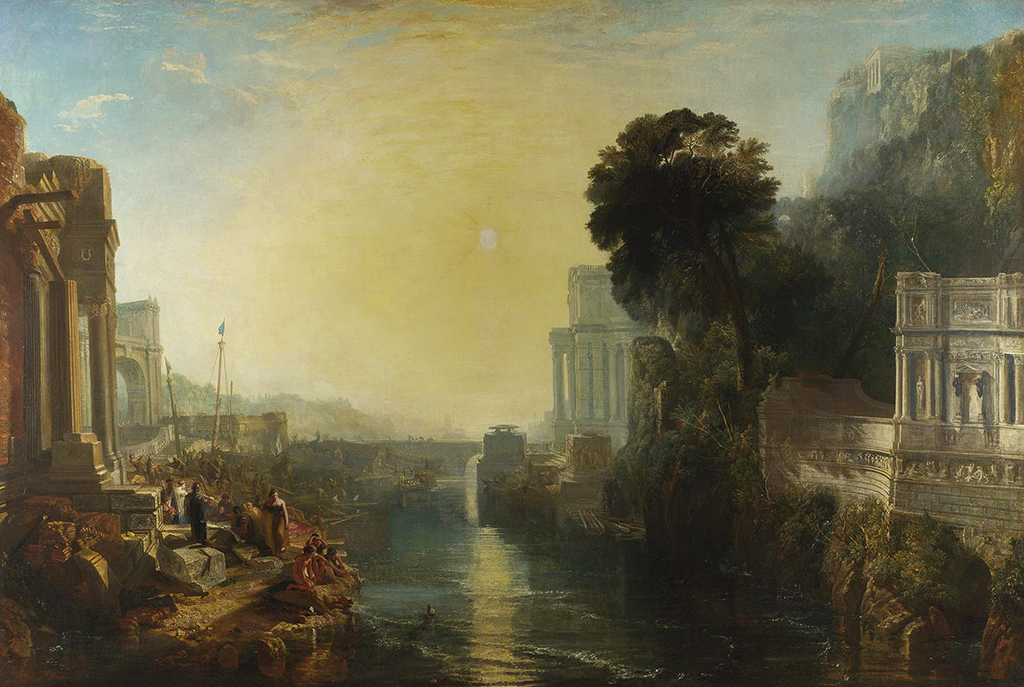Dido building Carthage is known to some as The Rise of the Carthaginian Empire, and is a classic artwork from JMW Turner, dated 1815. The depiction of architecture will remind some of the later leader of the Hudson River School, Thomas Cole.
The style and composition of this painting immediately remind us of the work of French painter, Claude Lorrain. Turner was known to follow his work from a century or more earlier and saw Lorrain as one of the very first to specialise in landscape art. The Frenchman was classed as a Luminist which generally refers to his wonderful control of light and colour and the link between these two painters has been examined by academics on several occasions. It is the use of architecture standing tall on both sides of the river, with a bright sun beating down through the centre of the painting which mosts reminds us of the work of Lorrain from the 17th century.
Virgil was a Roman poet who wrote a poem titled Aeneid, which was then translated into English by John Dryden. The passage tells the story of Aeneas who was a Trojan prince and was displaced after defeat in battle. Be came across the North African city of Carthage have been shipwrecked and immediately began a relationship with Queen Dido. The title of Turner's painting, therefore, refers to the Queen's construction of this beautiful, ancient city and her lover, Aeneas would be featured again in several other paintings from Turner. Carthage itself appears in nearly a dozen artworks from the artist and he is known to have been interested in the tales of civilisations that rose and fell in dramatic circumstances. See also The Decline of the Carthaginian Empire in the Tate collection, for an example of this.
This huge artwork measures 230cm wide by 155cm tall, with most of Turner's paintings following these same landscape dimensions. It was given to the state upon the artist's death, as part of a huge collection of his work. The artist created a large number of seascapes where humanity was left looking vulnerable in the face of the power of nature and within his scenes of Carthage, he was really discussing tragedy in the lives of Dido and Aeneas, where not everything was in their control either. The scene itself captures Dido dressed in blue, looking over the tomb which is being prepared for her husband, Sychaeus. She is easy to spot in an elegant outfit and the artist allows space around her in order to underline her significance.





